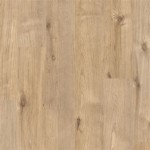Wood Tile Flooring: A Modern Classic
Wood tile flooring has emerged as a popular choice for homeowners seeking a combination of style and practicality. These tiles mimic the aesthetics of natural wood planks while offering the durability and ease of maintenance of ceramic or porcelain tiles. In this article, we delve into the essential aspects of wood tile flooring, exploring its advantages, installation process, and maintenance requirements.
Benefits of Wood Tile Flooring
Wood tile flooring offers several benefits that make it a desirable choice for a wide range of interiors:
- Realistic Appearance: Wood tiles are meticulously designed to capture the grain patterns, textures, and colors of natural wood, providing an authentic look and feel.
- Durability: Unlike real wood, wood tiles are resistant to scratches, dents, and moisture, making them suitable for high-traffic areas, kitchens, and bathrooms.
- Water Resistance: Ceramic and porcelain wood tiles are waterproof, eliminating the risk of warping or water damage in moisture-prone environments.
- Easy Maintenance: Wood tiles are simple to clean and maintain, requiring only occasional sweeping or mopping. Unlike natural wood, they do not require waxing, sealing, or staining.
- Versatility: Wood tiles are available in a wide range of sizes, colors, and finishes, allowing for customization to suit any design scheme.
Installation Process
Installing wood tile flooring involves several steps:
- Subfloor Preparation: The subfloor must be level and free of any debris or imperfections. If necessary, a layer of plywood or cement board may be installed to create a smooth surface.
- Layout: Before laying the tiles, determine the desired layout and spacing. Dry-lay the tiles to visualize the final appearance and plan for any necessary cuts.
- Thin-Set Mortar: Thin-set mortar is applied to the subfloor using a notched trowel. The tiles are then pressed into the mortar, ensuring proper alignment and spacing.
- Grouting: Once the tiles are set, grout is applied to fill the gaps between them. The grout can be matched to the tile color or used to create a contrasting effect.
- Sealing: For added protection, the grout and tiles can be sealed with a penetrating sealer. This helps prevent stains and moisture absorption.
Maintenance and Care
Proper maintenance is essential to preserve the beauty and longevity of wood tile flooring:
- Regular Cleaning: Sweep or vacuum the floor regularly to remove dust and debris. For deeper cleaning, use a mild detergent and warm water.
- Avoid Harsh Cleaners: Avoid using abrasive cleaners or acidic solutions, as they can damage the tiles or grout.
- Protect from Scratches: Use floor protectors under furniture legs and place mats under chairs to prevent scratches.
- Reapply Sealer: Reseal the tiles and grout as needed to maintain their protection against stains and moisture.
Conclusion
Wood tile flooring combines the timeless appeal of natural wood with the practicality of modern materials. Its durability, water resistance, and ease of maintenance make it an excellent choice for busy homes, kitchens, and bathrooms. With careful installation and proper care, wood tile flooring can provide years of beauty and functionality, enhancing the aesthetic appeal and value of any property.

Wood Look Tile Flooring All You Need To Know Oasis

11 Shades Of Natural Looking Wood Floor Tiles For Living Room

Modern Flooring Ideas 11 Options For Contemporary Homes Inc

Wood Effect Tiles That Look Like

25 Modern Floor Tile Designs The Best Patterns For Every Room

Trendy Wood Tiles Design Stylish Durable Options

Wood Effect Tiles That Look Like

Wood Tile Flooring

Wooden Floor Tile Designs For Living Room Design Cafe

Wooden Floor Tile Designs For Living Room Design Cafe
See Also







